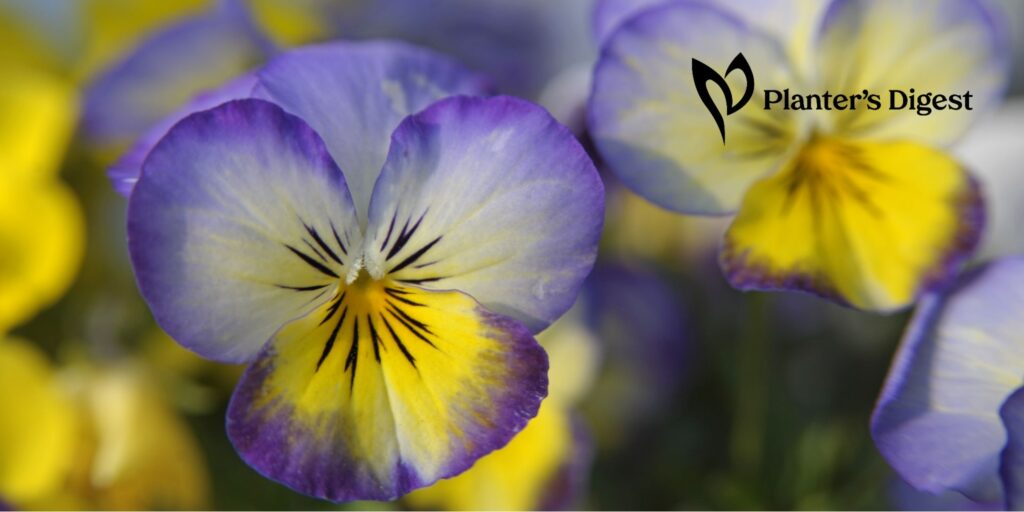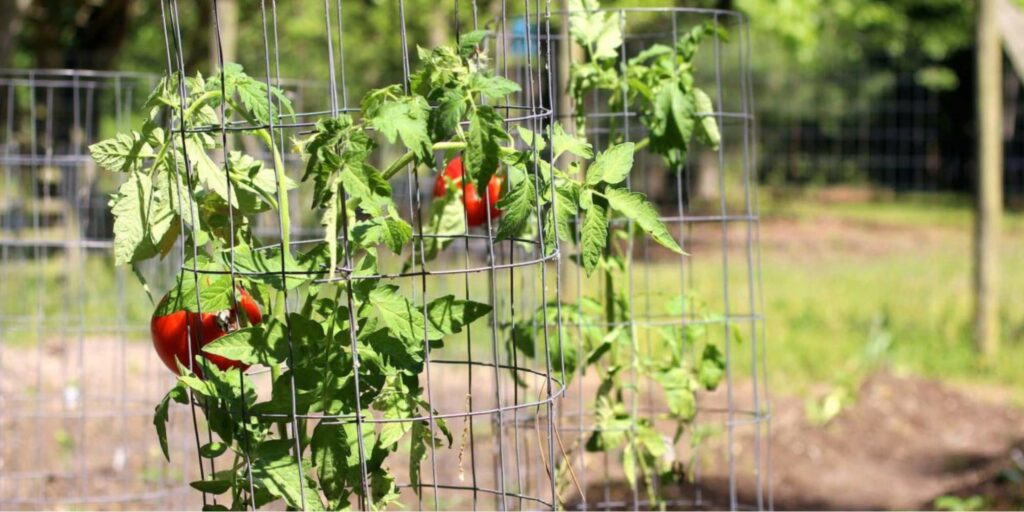February is often the perfect time for homeowners to start planting due to favorable conditions such as lengthening daylight and protection from late frost. These factors, along with a more controlled temperature, allow a better head start to growing plants.
But how do we know which greenery is best for this month? Today, we’ll explore the various leafy vegetables, root crops, and flowers that are considered the best plants to grow in February!
Spinach

| Ease of Growing | Easy ●○○○○ |
| Scientific Name | Spinacia oleracea |
| USDA Zone | 3-11 |
| Sow Indoors or in Greenhouse | Yes |
| Plant Outdoors | Early spring or fall |
| Cold Frame or Cloches | Yes |
| Size | Compact |
| Light | Full sun to partial shade |
| Soil | Well-drained, fertile |
| Temperature | Cool temperatures |
| Watering | Regular, consistent |
Spinach is an ideal cold-season crop. Sow or plant spinach in February for optimal growth in cooler temperatures.
Starting indoors or in a greenhouse provides a head start before outdoor transplanting.
This timing takes advantage of late winter and early spring temperatures, promoting strong leafy growth and preventing premature flowering.
Thyme

| Ease of Growing | Easy to Moderate ●●○○○ |
| Scientific Name | Thymus vulgaris |
| USDA Zone | 4-9 |
| Sow Indoors or in Greenhouse | Yes |
| Plant Outdoors | Spring or fall |
| Cold Frame or Cloches | Yes |
| Size | Compact, bushy |
| Light | Full sun to partial shade |
| Soil | Well-drained, sandy-loam |
| Temperature | Warm to hot |
| Watering | Moderate, drought-tolerant |
Optimal thyme planting is post-frost in late spring or early summer as this timing allows for robust root establishment to ensure a successful and flavorful harvest. It’s best to start thyme indoors or in a greenhouse, then transplant it outdoors in spring.
Thyme prefers warmer temperatures, making it great for spring and summer gardens.
Kale

| Ease of Growing | Easy ●○○○○ |
| Scientific Name | Brassica oleracea (Acephala Group) |
| USDA Zone | 7-10 (can tolerate frost) |
| Sow Indoors or in Greenhouse | Yes |
| Plant Outdoors | Early spring or fall |
| Cold Frame or Cloches | No |
| Size | Compact, leafy |
| Light | Full sun to partial shade |
| Soil | Well-drained, fertile |
| Temperature | Cool to warm temperatures |
| Watering | Regular, consistent |
Starting kale indoors in February or early spring ensures a better growing season and promotes healthy root development for this cold-hardy vegetable. Early planting promotes mature kale growth during cooler temperatures, enhancing flavor and texture.
This timing guarantees a plentiful harvest of nutrient-rich leaves in spring, providing a fresh and nutritious addition to meals.
Cilantro

| Ease of Growing | Easy ●○○○○ |
| Scientific Name | Coriandrum sativum |
| USDA Zone | 2-11 (usually grown as an annual) |
| Sow Indoors or in Greenhouse | Yes |
| Plant Outdoors | Spring or fall |
| Cold Frame or Cloches | No |
| Size | Compact, leafy |
| Light | Full sun to partial shade |
| Soil | Well-drained, fertile |
| Temperature | Cool to warm temperatures |
| Watering | Regular, moderate |
Kick off the growing season by starting cilantro indoors in February or early spring. This early planting guarantees a steady stream of flavorful leaves for culinary use later on during the warmer months.
Establishing roots before the main growth period ensures robust and healthy cilantro plants. Thriving in cooler temperatures, a February start sets the stage for optimal cilantro growth, flavor, and texture.
Basil

| Ease of Growing | Moderate ●●○○○ |
| Scientific Name | Ocimum basilicum |
| USDA Zone | 4-10 |
| Sow Indoors or in Greenhouse | Yes |
| Plant Outdoors | After the last frost |
| Cold Frame or Cloches | Yes |
| Size | Bushy, varies |
| Light | Full sun |
| Soil | Well-drained, fertile |
| Temperature | Warm temperatures, 70°F to 80°F (21°C to 27°C) |
| Watering | Regular, consistent |
Jumpstarting the growth of basil seeds indoors in early spring lays the groundwork for hearty growth, letting the seedling’s roots take hold before the season ramps up. With this early boost, the herb develops richer flavors and more aromatic leaves.
Getting ahead of the typical growing season extends your basil’s productivity, giving you more herby harvests.
Swiss Chard

| Ease of Growing | Easy ●○○○○ |
| Scientific Name | Beta vulgaris subsp. cicla |
| USDA Zone | 2-10 |
| Sow Indoors or in Greenhouse | Yes |
| Plant Outdoors | Early spring or late summer |
| Cold Frame or Cloches | No |
| Size | Large, leafy |
| Light | Full sun to partial shade |
| Soil | Well-drained, fertile |
| Temperature | Cool to warm temperatures, 40°F to 60°F (4°C to 15°C) |
| Watering | Regular, ample |
Start Swiss Chard indoors or in a greenhouse and transplant it outdoors in early spring or late summer. The timing mostly depends on the growing conditions and desired harvest time.
In milder winter regions, starting it in February allows for an early growing season and a prolonged harvest of nutritious leaves.
Chilies

| Ease of Growing | Moderate to Difficult ●●●●○ |
| Scientific Name | Capsicum annuum |
| USDA Zone | 9-11 (perennial); Annual in colder zones |
| Sow Indoors or in Greenhouse | Yes |
| Plant Outdoors | After the last frost |
| Cold Frame or Cloches | Yes |
| Size | Compact, varies |
| Light | Full sun |
| Soil | Well-drained, fertile |
| Temperature | Warm to hot temperatures, 70°F to 80°F (21°C to 27°C) |
| Watering | Regular, consistent |
Grow chilies as annuals in colder zones below USDA Zone 9 and as perennials in warmer zones. Begin by sowing indoors or in a greenhouse, transplanting after the last frost, and using cold frames or cloches for extra early protection.
Growing them indoors in February provides a head start, ensuring they’re well-established for outdoor transplanting after the last frost. This early planting approach increases the chances of a plentiful chili harvest later in the season.
Radish

| Ease of Growing | Easy ●○○○○ |
| Scientific Name | Raphanus sativus |
| USDA Zone | 2-10 |
| Sow Indoors or in Greenhouse | No |
| Plant Outdoors | Early spring or fall |
| Cold Frame or Cloches | No |
| Size | Small, compact |
| Light | Full sun to partial shade |
| Soil | Well-drained, loose |
| Temperature | Cool to warm temperatures, 40°F to 60°F (4°C to 15°C) |
| Watering | Regular, moderate |
Radishes are typically grown outdoors without the need for indoor or greenhouse cultivation. Plant them in early spring or fall, and they don’t require cold frames or cloches.
They adapt to various climates and can be planted in February in milder regions for an early growing season.
Beetroot

| Ease of Growing | Easy ●○○○○ |
| Scientific Name | Beta vulgaris |
| USDA Zone | 2-10 |
| Sow Indoors or in Greenhouse | Yes |
| Plant Outdoors | Early spring or late summer |
| Cold Frame or Cloches | No |
| Size | Medium, bulbous |
| Light | Full sun to partial shade |
| Soil | Well-drained, fertile |
| Temperature | Cool to warm temperatures, 40°F to 60°F (4°C to 15°C) |
| Watering | Regular, consistent |
Plant beetroot directly outdoors or consider starting it indoors or in a greenhouse. Plant in early spring or late summer, without needing cold frames.
Starting indoors in February offers an early start, especially in milder winters, ensuring well-established plants for a successful harvest.
Eggplant

| Ease of Growing | Moderate ●●○○○ |
| Scientific Name | Solanum melongena |
| USDA Zone | 5-12 |
| Sow Indoors or in Greenhouse | Yes |
| Plant Outdoors | After the last frost |
| Cold Frame or Cloches | Yes |
| Size | Medium to large, bushy |
| Light | Full sun |
| Soil | Well-drained, fertile |
| Temperature | Warm to hot temperatures, 70°F to 80°F (21°C to 27°C) |
| Watering | Regular, ample |
Eggplants are commonly grown as annuals. You can start them indoors or in a greenhouse, then transplant them outdoors after the last frost.
Use cold frames or cloches for protection in cooler temperatures.
Starting them indoors in February ensures they’re ready to produce abundant fruit when transplanted after the last frost.
Peas

| Ease of Growing | Easy ●○○○○ |
| Scientific Name | Pisum sativum |
| USDA Zone | 2-11 |
| Sow Indoors or in Greenhouse | No |
| Plant Outdoors | Early spring or fall |
| Cold Frame or Cloches | No |
| Size | Vining, varies |
| Light | Full sun to partial shade |
| Soil | Well-drained, fertile |
| Temperature | Cool to warm temperatures, 40°F to 60°F (4°C to 15°C) |
| Watering | Regular |
Plant peas directly outdoors in early spring or fall, depending on the variety and desired harvest time. They’re pretty resilient and don’t need indoor sowing or greenhouse cultivation.
In regions with milder winters, starting peas outdoors in February is possible for an early growing season.
Sweet Pea

| Ease of Growing | Moderate to Difficult ●●●●○ |
| Scientific Name | Lathyrus odoratus |
| USDA Zone | 2-11 |
| Sow Indoors or in Greenhouse | Yes |
| Plant Outdoors | Early spring |
| Cold Frame or Cloches | Yes |
| Size | Climbing, varies |
| Light | Full sun to partial shade |
| Soil | Well-drained, fertile |
| Temperature | Cool temperatures, 40°F to 60°F (4°C to 15°C) |
| Watering | Regular |
Sweet peas are typically grown as annuals, especially when indoors or in a greenhouse. Transplant them outdoors in early spring, using cold frames or cloches for protection in cooler periods.
Starting sweet peas indoors in February is common for robust seedling development, ready for outdoor transplanting after the frost risk is gone.
Poppies

| Ease of Growing | Easy to Moderate ●●○○○ |
| Scientific Name | Papaver spp. |
| USDA Zone | 3-9 |
| Sow Indoors or in Greenhouse | No |
| Plant Outdoors | Early spring or fall |
| Cold Frame or Cloches | No |
| Size | Varies, typically medium to tall |
| Light | Full sun |
| Soil | Well-drained, sandy-loam |
| Temperature | Cool to warm temperatures, 50°F to 70°F (10°C to 21°C) |
| Watering | Low to moderate |
Directly plant poppies outdoors in early spring or fall, depending on the variety. Their easy growth makes them popular for gardens, especially when planted in February for early spring blooms in milder winter regions.
Dusty Miller

| Ease of Growing | Easy ●○○○○ |
| Scientific Name | Centaurea cineraria |
| USDA Zone | 8-10 (usually grown as an annual) |
| Sow Indoors or in Greenhouse | Yes |
| Plant Outdoors | After the last frost |
| Cold Frame or Cloches | No |
| Size | Compact, mounding |
| Light | Full sun to partial shade |
| Soil | Well-drained, sandy-loam |
| Temperature | Cool to warm temperatures, 50°F to 70°F (10°C to 21°C) |
| Watering | Moderate |
Start Dusty Miller by sowing indoors or in a greenhouse, then transplant outdoors after the last frost. It adapts to various climates and starting it indoors in February can give an early advantage for a well-developed garden display.
Gladiolus

| Ease of Growing | Moderate to Difficult ●●●●○ |
| Scientific Name | Gladiolus spp. |
| USDA Zone | 7-10 (typically grown as annuals or lifted in colder zones) |
| Sow Indoors or in Greenhouse | Yes |
| Plant Outdoors | Spring |
| Cold Frame or Cloches | No |
| Size | Tall, varies |
| Light | Full sun |
| Soil | Well-drained, fertile |
| Temperature | Warm temperatures |
| Watering | Regular, ample |
Grow Gladiolus as annuals in warmer zones while in colder zones, lift and store corms in winter. Start indoors or in a greenhouse, transplanting in spring.
Cold frames or cloches are usually unnecessary.
Roses

| Ease of Growing | Moderate to Difficult ●●●●○ |
| Scientific Name | Rosa spp. |
| USDA Zone | 2-11 |
| Sow Indoors or in Greenhouse | No |
| Plant Outdoors | Early spring or fall |
| Cold Frame or Cloches | No |
| Size | Varies, typically bushy |
| Light | Full sun |
| Soil | Well-drained, fertile |
| Temperature | Moderate to warm temperatures |
| Watering | Regular, deep |
Roses adapt to various climates although typically, they’re directly planted outdoors, and cold frames or cloches aren’t necessary. Plant them in early spring or fall for optimal establishment.
Geranium

| Ease of Growing | Easy to Moderate ●●○○○ |
| Scientific Name | Pelargonium spp. |
| USDA Zone | 10-11 (usually grown as annuals) |
| Sow Indoors or in Greenhouse | Yes |
| Plant Outdoors | After the last frost |
| Cold Frame or Cloches | No |
| Size | Compact to spreading |
| Light | Full sun to partial shade |
| Soil | Well-drained, fertile |
| Temperature | Moderate to warm temperatures, 50°F to 70°F (10°C to 21°C) |
| Watering | Moderate |
Begin geraniums indoors or in a greenhouse, transplanting after the last frost. Adaptable to different climates, starting geraniums indoors in February guarantees improved growth and more vibrant flowers and foliage after the frost.
Pansy

| Ease of Growing | Easy ●○○○○ |
| Scientific Name | Viola × wittrockiana |
| USDA Zone | 4-8 (usually grown as annuals) |
| Sow Indoors or in Greenhouse | Yes |
| Plant Outdoors | Early spring or fall |
| Cold Frame or Cloches | No |
| Size | Compact, low-growing |
| Light | Full sun to partial shade |
| Soil | Well-drained, fertile |
| Temperature | Cool temperatures, 40°F to 60°F (4°C to 15°C) |
| Watering | Moderate |
Start pansies indoors or in a greenhouse, then transplant outdoors in early spring or fall. Cold frames or cloches are usually unnecessary.
Pansies like cooler temperatures so starting them indoors in February can lead to more colorful displays when transplanted outdoors in early spring.
Begonia

| Ease of Growing | Easy to Moderate ●●○○○ |
| Scientific Name | Begonia spp. |
| USDA Zone | 10-11 (usually grown as annuals) |
| Sow Indoors or in Greenhouse | Yes |
| Plant Outdoors | After the last frost |
| Cold Frame or Cloches | No |
| Size | Varies, typically compact to medium |
| Light | Indirect light to partial shade |
| Soil | Well-drained, fertile |
| Temperature | Moderate to warm temperatures, 50°F to 70°F (10°C to 21°C) |
| Watering | Moderate to high |
Begin begonias indoors or in a greenhouse, then move them outside after the last frost. No need for cold frames or cloches as they’re quite resilient in cold temperatures.
Agapanthus

| Ease of Growing | Easy to Moderate ●●○○○ |
| Scientific Name | Agapanthus spp. |
| USDA Zone | 7-11 (usually grown as perennials) |
| Sow Indoors or in Greenhouse | Yes |
| Plant Outdoors | Spring or fall |
| Cold Frame or Cloches | No |
| Size | Medium to tall |
| Light | Full sun to partial shade |
| Soil | Well-drained, fertile |
| Temperature | Moderate to warm temperatures, 50°F to 70°F (10°C to 21°C) |
| Watering | Moderate |
Planting agapanthus in February is a great approach for strong root development before the growing season, making them more resilient. Start indoors or in a greenhouse, then transplant outdoors in spring or fall, aligning with their natural growth cycle.
This timing ensures agapanthus are well-prepared to produce clusters of flowers in summer for an attractive garden display.
Dahlias

| Ease of Growing | Moderate to Difficult ●●●●○ |
| Scientific Name | Dahlia spp. |
| USDA Zone | 8-11 (usually grown as tubers or lifted in colder zones) |
| Sow Indoors or in Greenhouse | Yes |
| Plant Outdoors | After the last frost |
| Cold Frame or Cloches | No |
| Size | Varies, typically medium to tall |
| Light | Full sun |
| Soil | Well-drained, fertile |
| Temperature | Warm temperatures, 70°F to 80°F (21°C to 27°C) |
| Watering | Regular, ample |
Early dahlia planting in February promotes root growth and increases the chance of having healthy plants. Dahlias benefit from starting indoors or in a protected environment during February to provide warmth and the right growth conditions.
Begin dahlias indoors or in a greenhouse, move them outside after the last frost. Cold frames or cloches aren’t usually needed as they’re quite tough.
Lily

| Ease of Growing | Easy to Moderate ●●○○○ |
| Scientific Name | Lilium spp. |
| USDA Zone | 3-9 |
| Sow Indoors or in Greenhouse | Yes |
| Plant Outdoors | Spring or fall |
| Cold Frame or Cloches | No |
| Size | Varies, typically medium to tall |
| Light | Full sun to partial shade |
| Soil | Well-drained, fertile |
| Temperature | Moderate to warm temperatures, 70°F to 80°F (21°C to 27°C) |
| Watering | Regular, ample |
Sowing, growing, or transplanting lilies in February is crucial because it allows the bulbs to establish roots before the growing season. This early start promotes sturdy and healthy plant development.
Lilies require a period of chilling to initiate growth, and planting in February aligns with their natural growth cycle. Start lilies indoors or in a greenhouse, then you can transplant them outdoors during spring.
Cosmos

| Ease of Growing | Easy ●○○○○ |
| Scientific Name | Cosmos bipinnatus |
| USDA Zone | 2-11 (usually grown as annuals) |
| Sow Indoors or in Greenhouse | Yes |
| Plant Outdoors | After the last frost |
| Cold Frame or Cloches | No |
| Size | Medium to tall |
| Light | Full sun |
| Soil | Well-drained, average |
| Temperature | Moderate to warm temperatures, 50°F to 70°F (10°C to 21°C) |
| Watering | Moderate |
Cosmos cultivation begins with indoor sowing or greenhouse planting, followed by outdoor transplantation after the last frost. Cold frames or cloches are typically unnecessary for the cosmos.
Initiating cosmos indoors in February offers a strategic advantage, fostering robust growth post-frost for homeowners seeking stronger and healthier plants.
Lavender

| Ease of Growing | Easy to Moderate ●●○○○ |
| Scientific Name | Lavandula spp. |
| USDA Zone | 5-9 |
| Sow Indoors or in Greenhouse | Yes |
| Plant Outdoors | Spring or fall |
| Cold Frame or Cloches | No |
| Size | Compact, varies |
| Light | Full sun |
| Soil | Well-drained, sandy-loam |
| Temperature | Warm to hot temperatures |
| Watering | Low to moderate |
Homeowners can start lavender indoors or in a greenhouse, then transplant it outdoors in spring or fall. There’s no need for cold frames or cloches as these Mediterranean plants can be pretty hardy.
Starting lavender indoors in February or early spring ensures an early growing season, leading to well-established and aromatic plants when transplanted outdoors.
Calendula

| Ease of Growing | Easy ●○○○○ |
| Scientific Name | Calendula officinalis |
| USDA Zone | 2-11 (usually grown as an annual) |
| Sow Indoors or in Greenhouse | Yes |
| Plant Outdoors | Early spring or fall |
| Cold Frame or Cloches | No |
| Size | Compact, bushy |
| Light | Full sun to partial shade |
| Soil | Well-drained, fertile |
| Temperature | Cool to warm temperatures |
| Watering | Regular, moderate |
Calendula cultivation involves indoor sowing or greenhouse planting, followed by outdoor transplantation in early spring or fall. Cold frames or cloches are usually unnecessary.
Starting indoors in February or early spring yields a head start, resulting in strong plants with flowers valued for medicinal and culinary purposes.





